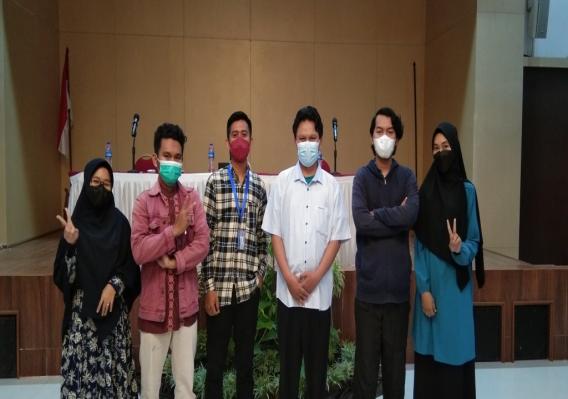Minimizing Religious and Cultural Friction, UNY Students Find A Model Of Tolerance (Passing 34th Pimnas)

Differences in understanding become a necessity. Case study research conducted by Universitas Negeri Yogyakarta (UNY) students at the Mataram Grand Mosque, Kotagede, Yogyakarta, presents a new perspective in viewing religious tolerance. Research Humanities Research funded by the Directorate General of Learning and Student Affairs (Dirjen Belmawa) departs from anxiety that so far religion and culture are often seen as creating friction. The study, which brought students to the 34th National Student Scientific Week (PIMNAS) at the University of North Sumatra, found that both could create positive values to prevent the disintegration of religious, national and state life.
This research was conducted by M. Syamsuddin, Kurniatul Jannah (Faculty of Social Sciences), Novia Indriani (Faculty of Language Arts), Aditia Pramudia, and M. Insan Fathin (FMIPA) have found a model of tolerance that is unique and can later be implemented by the community in their lives.
Benni Setiawan, the supervising lecturer in this study stated that the findings in this study encourage people to live peacefully within the framework of humanity. This research involved courtiers of the Yogyakarta Palace, mosque takmir, Muhammadiyah residents, and the Kejawen Islamic community in the Mataram Grand Mosque as resource persons.
“The findings in this study are in accordance with the Islamic concepts of Rahmatan lil ‘alamin which are embraced by the two entities who were both born from the Yogyakarta Palace. Muhammadiyah and Kejawen Islam are united in a tolerant and peaceful spirit of Yogyakarta,” explained M. Syamsuddin, the lead researcher of this research.
It was proven that Muhammadiyah and Kejawen Islam could jointly carry out activities at the Satu Suro celebration at the Mataram Grand Mosque. This celebration is in the framework of the Javanese New Year. Usually, Javanese people who understand Kejawen Islam perform a number of rituals and traditions. The value of tolerance that was built in the ritual was awakened when Muhammadiyah in Kotagede was involved as the head of Kejawen Islamic rituals and the Tahlilan event. This practitioner buried the notion that Muhammadiyah was anti-ritual and tahlilan.
The above practice does not mean that Muhammadiyah preserves or justifies things that are shirk, bid’ah, superstition, and superstition. However, this is how Muhammadiyah understands and responds to the da’wah approach, maturity, and modernity of Persyarikatan in viewing culture.
“This is the model of the active tolerance relationship found in this study,” said Kurniatul Jannah. The tolerance model requires the involvement of a person even though there are differences in understanding but still has a goal to maintain harmony. When all are able to be tolerant actively, the disintegration of religious, national and state life can be prevented. “Tolerance without negative stigma is the strength of this research,” added Aditia.






